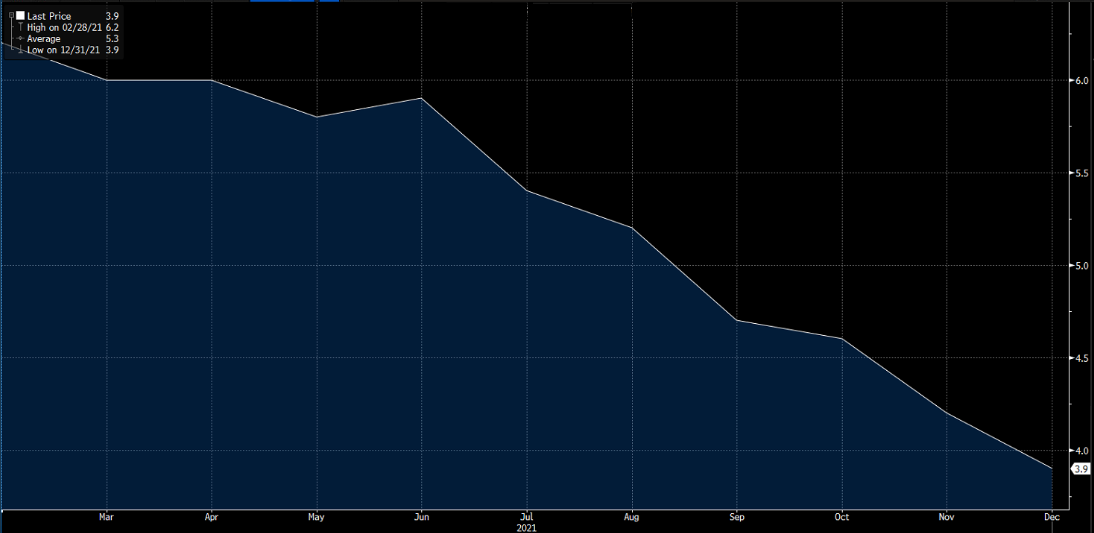Release: 4th February—08:30 AM EST – 1:30 PM GMT
Reading time: 9 minutes
Two comprehensive surveys provide economists, investors and traders a snapshot of the employment situation in the United States at the beginning of each month, measuring employment trends and current levels. Due to its timeliness, accuracy and importance within the broader economy, the employment situation report is closely monitored across the investment space.
The Household Survey, or Current Population Survey, calculates labour of the civilian non-institutional population.
The Establishment Survey, often referred to as the Payroll Survey, measures employment, hours and earnings in the non-farm sector.
- The Household Survey derives data from approximately 60,000 households, led by the Bureau of Census for the Bureau of Labour Statistics, or BLS. The survey includes farm, non-farm, self-employed (unincorporated) and domestic helpers.
- The Establishment Survey tends to capture the spotlight. Through the Current Employment Statistics (CES), each month the program contacts approximately 144,000 businesses—representing nearly 700,000 worksites—targeting the payroll of non-farm businesses, non-profit groups and government organisations across the United States.
In most cases, the non-farm payrolls report (derived from the establishment survey) attracts the majority of attention, often vibrating financial markets. A favourable number (generally considered USD positive) reveals additional jobs were added to the economy, while a negative value (often viewed as USD negative), displayed as -100k or -90k, for example, informs that jobs were lost in non-farm business.
Employment is considered a leading indicator of consumer spending.
The non-farm payrolls release is a measure of new payrolls added by private and government organisations in the US, reported each month by the Bureau of Labour Statistics (BLS). For as long as many will remember, the non-farm payrolls month-over-month change tends to carry enough wallop to wobble financial markets.
150,000 non-farm payrolls are to be added to the US economy in January, according to Bloomberg’s current median estimate. However, the forecast ranges between a 250,000 advance and a 400,000 decline, with an average of 89,000.
Westpac, an Australian bank and financial services provider, anticipates a 200,000 increase in payrolls. The Westpac weekly report had the following to say[1]:
The US labour market is historically tight, in part due to the strong employment gains seen through the recovery, but also as a result of weak participation. A material rise in participation is unlikely in January or the months that follow as the US battles to contain Omicron and its effect on health and education, requiring would-be workers to remain out of the workforce.
As a result, despite softer employment growth, the unemployment rate is likely to continue tracking lower through Q1, with risks skewed towards a larger fall back towards the pre-pandemic level of 3.5 percent.
Source: Bloomberg
Private payrolls, according to January’s ADP National Employment release, dropped 301,000 on a month-on-month basis, with small businesses (144,000) harder hit than medium and large-size employers. Defying economists’ forecast range between 200,000 and 185,000, January’s decline represents the largest monthly drop since mid-2020 and the first time since December 2020 ADP payrolls released a negative print.
‘The labour market recovery took a step back at the start of 2022 due to the effect of the Omicron variant and its significant, though likely temporary, impact to job growth’, said Nela Richardson, chief economist, ADP. ‘The majority of industry sectors experienced job loss, marking the most recent decline since December 2020. Leisure and hospitality saw the largest setback after substantial gains in fourth quarter 2021, while small businesses were hit hardest by losses, erasing most of the job gains made in December 2021’[2].
Kathy Jones, Chief Fixed Income Strategist for Charles Schwab & Co., Inc., Tweeted[3]:
‘Big miss on ADP employment may be a precursor to a weak Jobs Report on Friday. The one thing to note is that all sectors are negative and the last time that happened was in April 2020’.
 The unemployment rate, also referred to as joblessness, is a closely followed economic indicator. The US unemployment rate is derived from a monthly survey called the Current Population Survey (CPS), made up of approximately 60,000 households[4].
The unemployment rate, also referred to as joblessness, is a closely followed economic indicator. The US unemployment rate is derived from a monthly survey called the Current Population Survey (CPS), made up of approximately 60,000 households[4].
Unemployment dropped to 3.9 percent in December 2021 from November’s 4.2 percent print and the 6.7 percent a year earlier, elbowing the value to within touching distance of pre-pandemic levels of 3.5 percent (February 2020). January’s release is to remain unchanged at 3.9 percent, according to Bloomberg’s median estimate, with a forecast scope between a 4.2 percent increase and 3.7 percent decline.
Source: Bloomberg
Calculated by the BLS (establishment survey data), average hourly earnings measure the amount employees make each hour in the US. Average hourly earnings for non-farm employees is a leading indicator of consumer inflation and also the earliest data in terms of labour inflation. Therefore, this will be a figure of interest today due to its possible inflationary effects.
Wages increased 19 cents—or 0.6 percent—to $31.31 in December 2021, bettering November’s upwardly revised 0.4 percent release and the 0.4 percent economists’ forecast. January’s release, however, is anticipated to tick lower to 0.5 percent, according to Bloomberg’s median estimate, and 5.2 percent from a year prior. The average estimate is 0.5 percent with a forecast range fixed between a high of 0.8 percent and a low of 0.3 percent.
Source: Bloomberg
In essence, US non-farm payrolls falling below economists’ forecasts could see the Fed maintain its current policy approach. A better-than-expected number, on the other hand, swings the pendulum in favour of a 50-basis point hike at the Fed meeting in March.
FP Markets Technical Outlook
US Dollar Index (ticker: DXY)
Daily Timeframe:
Trendline support, drawn from the low 89.67, was overthrown Thursday, clearing the technical path to support at 94.65, a level boasting historical significance since March 2020. The recent decline follows a one-sided drop from 2022 tops, a touch under Quasimodo resistance at 97.45.
Trend studies show the dollar has been higher since touching support at 89.69 in May 2021.
H1 timeframe:
The 94.83 95.00 prime support is close by, and may be an area challenged should the report weigh on the US dollar. Particular emphasis is on support at 94.90. To the upside, Quasimodo support-turned resistance at 95.59 is seen as notable structure.
[1] https://www.westpac.com.au/docs/pdf/aw/economics-research/WestpacWeekly.pdf
[2] https://adpemploymentreport.com/2022/January/NER/docs/ADP-NATIONAL-EMPLOYMENT-REPORT-January2022-Final-Press-Release.pdf













 Access +10,000 financial
instruments
Access +10,000 financial
instruments

